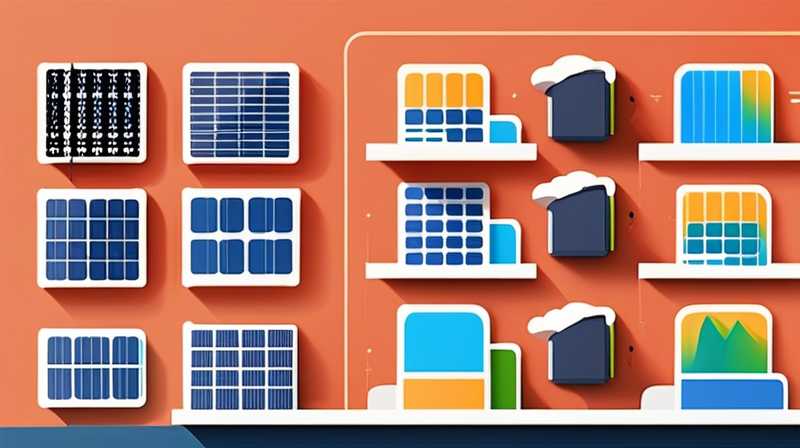
How many degrees of solar energy is best?
- The optimal angle for solar energy collection is crucial for maximizing efficiency, 2. the best tilt varies based on geographic location, 3. seasonal adjustments enhance energy retention, 4. tracking systems can significantly increase output. To elaborate, the ideal angle at which solar panels should be installed depends largely on the latitude of the location. For example, locations closer to the equator will often benefit from flat installations, while areas at higher latitudes require more angled approaches to capture sunlight effectively throughout the year. Understanding the significance of these varying degrees allows individuals and businesses to optimize their solar energy systems, ensuring a more sustainable environment and reduced energy costs.
1. THE ROLE OF ANGLE IN SOLAR ENERGY
The importance of angle in solar energy collection cannot be understated. When solar panels are installed at an optimal angle, they can absorb more sunlight, resulting in higher energy output. The angle at which the panels are set can make a significant difference in overall performance. For instance, panels facing directly towards the sun during peak sunlight hours will gather more energy compared to those that are misaligned.
Moreover, the efficiency of solar panels is often quantified through metrics such as energy conversion ratios. Panels tilted at the right angle can convert a larger percentage of sunlight into usable electricity. Not addressing this key factor could lead to wasted potential and a noticeable increase in energy costs, making proper installation paramount.
2. INFLUENCE OF GEOGRAPHIC LOCATION
Geographic location plays a fundamental role in determining the most advantageous angles for solar panels. Different regions receive varying amounts of sunlight throughout the year, influencing how effectively solar panels can operate. For example, areas situated in southern latitudes tend to receive more consistent sunlight, allowing for flatter panel installations. In contrast, regions closer to the poles require steeper angles to optimize sunlight exposure.
The positioning of solar panels with respect to geological features like mountains or large structures can also impact energy collection. Shadowing can drastically reduce panel efficiency if not adequately considered. Therefore, careful analysis of the surrounding environment is vital in determining the most beneficial angle for solar energy harnessing.
3. SEASONAL CONSIDERATIONS FOR TILTING
Adjusting the angle of solar panels based on seasonal changes can lead to marked improvements in energy capture. Different times of the year present unique angles of the sun’s trajectory, necessitating adjustments for optimal energy collection. For instance, in winter, the sun’s path is lower in the sky, which may require a steeper panel angle to capture more sunlight. Conversely, during summer months, a lower angle may prove advantageous due to the sun’s higher position.
Many solar panel systems are designed with fixed installations; however, some advanced setups include adjustable mounts. These systems allow users to tilt panels seasonally for maximum efficiency. The benefits of this approach can lead to energy savings and a quicker return on investment.
4. TRACKING SYSTEMS AND THEIR ROLE
Integrating solar tracking systems can significantly enhance energy production. These systems adjust the angle of the solar panels throughout the day to follow the sun’s path, ensuring optimal sunlight exposure at all times. Solar trackers can vary in complexity; some rotate along a single axis, while others are designed for dual-axis movements, allowing for greater adaptability in various conditions.
Though the initial investment in tracking systems can be higher than that of standard installations, the potential for increased energy output often justifies the expense. Such installations can yield up to 25-45% more energy compared to fixed systems, making them a valuable consideration for ambitious solar energy projects.
FAQs
WHAT IS THE BEST ANGLE FOR SOLAR PANELS IN MY AREA?
The most effective tilt angle for solar panels relies on your geographic location, specifically your latitude. Generally, the ideal angle can be approximated as your latitude plus or minus 15 degrees. For example, if you live at a latitude of 30 degrees, your optimal tilt could be between 15 and 45 degrees, adjusting seasonally as necessary. Specific tools and calculators, such as solar pathfinders, are available to provide precise angles tailored to your surroundings.
CAN SOLAR PANELS BE INSTALLATION AT FLAT ANGLES?
Yes, solar panels can be installed at flat angles, especially in regions with consistent sunlight, such as tropical areas. However, flat installations may compromise performance during certain seasons, as panels are less effective at collecting sunlight when the sun is low in the sky. In such cases, professionals often recommend installing a slight tilt to maximize exposure throughout the year. It’s important to consider local weather patterns and potential shading affecting performance over time.
DO TRACKING SYSTEMS NECESSITATE REGULAR MAINTENANCE?
Tracking solar systems do require maintenance, though they offer notable advantages in energy capture. Regular inspections should be conducted to ensure the mechanics function smoothly, and occasional calibration may be necessary to maintain optimal tracking. The components, including motors and sensors, should be checked for wear and tear. Proper maintenance can sustain the system’s efficiency and longevity, maximizing your investment in solar energy collection.
Understanding the optimal angles for solar energy collection is essential to maximizing efficiency and energy output. The specific configurations may vary based on geographic location, seasonal adjustments, and the type of tracking systems used. By taking these factors into account, individuals and organizations can make informed decisions that not only foster sustainability but also lead to substantial cost savings over time. The ongoing advancements in solar technology further emphasize the importance of staying abreast of best practices and innovations in solar energy. An informed approach to installation and maintenance by embracing geographic specifications and technological advancements enhances the overall experience, ensuring a sound investment in a greener future.
Original article by NenPower, If reposted, please credit the source: https://nenpower.com/blog/how-many-degrees-of-solar-energy-is-best/


